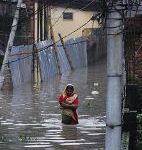It has been little over a year since Nepal was declared a democratic republic; the burden of responsibilities weighs more now than ever on the country’s policy-makers. Throughout this time, the conversation among the framers of Nepal’s new constitution has been predominantly – and rightly – about delivering people’s aspirations: principally, social justice and development. One is not possible with the other, and Nepal’s policy-makers must also consider the implications of their relationships with the environment and sustainability. To not also consider all of these issues would seriously undermine the longevity of the policies Nepal hopes to draft into its new constitution.
Our natural environment and the changes it experiences are the defining issues of the era. Environmental problems not only affect Nepal’s poor and marginalised, but every Nepali. The policies that we create to safeguard our environment are at the core of Nepal’s ambition to deliver social justice and development. However, they are not given the attention required by policymakers.
Issues surrounding food security, health, land use and development are all directly linked to climate change. Reports say that developing nations will be hit hardest by climate change. And even within poor countries like Nepal, the poorest and most marginalised communities will be the worst affected. This is a problem that we have inherited and will hand down to future generations – with added “interest” – if immediate action is not taken to address environmental concerns.
Let us look at the topics that are the most important for social justice: rights to food, good health, land and a home. Until the 1970s, Nepal was self-sufficient in its food production and supply. But today – for various reasons, including population growth and mismanagement of resources – food insecurity is a chronic problem in Nepal. Last year’s food crisis led to protests, riots and strict food export policies in countries around the world. Subsequent reports have raised concerns that unless we pay attention to climate change, it will cause further havoc for our food supply.
Nepal also cannot address climate change and food security without considering land-use policies. The International Food Policy Research Institute (IFPRI) has reported that agriculture not only provides livelihoods to more than half of the world’s poorest people, but also accounts for 14% of the world’s greenhouse–gas emissions; while land-use change, such as forest loss, contributes 19%. Half of these agricultural emissions and 80 % of land-use change and forestry emissions come from developing countries. Clearing the forests for food growth and land distribution is not an option, as forests are one of the most important elements in preserving the environment. In fact, Nepal needs to actively restore some of its lost forest vegetation.
Scientific reports increasingly relate climate change with health issues: a study by the Global Humanitarian Forum estimated last month that climate change kills 315,000 and seriously 325 million people every year. By 2030, the number of people killed could rise to 500,000 and 10% of the world’s population could be affected. Countries like Nepal will be among the hardest hit.
Sources of energy are, of course, crucial to development, but burning fossil fuels and firewood have disastrous long-term effects on the environment, and large hydropower projects have ecological implications, too. This is an intergenerational problem that requires consistent and cohesive intergenerational solutions. So, how does Nepal move ahead? The country could either take the traditional path that prioritises development over other concerns, such as the environment: the prevailing view among the political leadership. Or we could transition to sustainable development.
Sustainable development is a path that ensures all development activities cause the least amount of harm to our environment, and includes the responsibilities of mitigating, and adapting to, climate change. But this is a cause that Nepal cannot work towards on its own; developing countries must help Nepal.
In the build-up to the Copenhagen climate-change conference in December, a proposal submitted by Mexico has picked up steam. Mexico argues for the establishment of a “green fund”, designed specifically to help countries like Nepal develop in a sustainable way, not only by providing money, but also with much-needed technical expertise. Such programmes will have global repercussions, and can help Nepal to set an example among industrialising countries by taking an alternative development path.
The environment must be made a crucial part of current policy-making conversations; simply adding a few environmental policies is not enough. Policy-makers must understand the importance of implementation. With the constitution as the legal framework, Nepal must work towards a sustainable socio-economic development agenda. Climate change is an intergenerational problem and Nepal’s constitution is an intergenerational guideline. Nepal must not fail to draft a constitution that addresses the most pressing problem of the coming decades. Domestically, Nepal requires a renewed and urgent understanding of the relationship between social justice, development and environmental sustainability. Multilaterally, Nepal needs an unflinching commitment of help to address climate change from countries that contributed the most to creating the problem. The international community must press Nepal to deliver on its goals in a sustainable manner; and it is their fundamental duty to support the country in that process.
Gagan Thapa is a member of the Fundamental Rights Committee of Nepal’s Constituent Assembly
Kashish Das Shresth is director of 350 Nepal
An earlier version of this article was published by the Kathmandu Post on June 5, 2009.
Homepage photo by dul_conte

